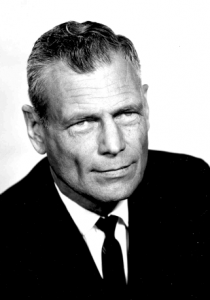Groundhog Day: How San Diego today is like San Diego in 1975
Read Part I here.
Reading about the 1975 Regional Transportation Plan, the region’s first comprehensive plan to guide the region’s growth into the future, gives me a feeling that I’m living in a real life version of Groundhog Day – the 1993 movie about a man who finds himself in a time loop living the same day over and over again. It seems like portions of history are repeating itself again. And this provides a window of an opportunity to permanently change the course of our transportation future which is again within our grasp.

Understanding the reasons behind the failure of regional planning in the San Diego region requires some understanding of Caltrans’ influence on the region alongside some understanding of state and bike advocacy politics.
In 1975, our current Governor, Jerry Brown, was first elected governor. He had appointed Adriana Gianturco as Director of Caltrans – to oversee the agency’s operations throughout the state. But she wasn’t well received. San Diego’s first Caltrans District Director Jacob Dekema stated that Gianturco “was opposed to all highway construction. She wanted everybody to ride bicycles or streetcars or buses, and any highways would be over her dead body.” Gianturco had no chance of success even with her approach to bicycling .
Four years prior to Gianturco’s appointment, current Lemon Grove resident John Forester was ticketed in Palo Alto for riding on the street instead of on a separated bicycle facility. This ticket inspired him to spend the rest of his life (to this day) fighting any sort of bicycle facility while remaining curiously silent on the Caltrans’ highway focused approach on the region and our local communities. Forester’s persistence allowed him to successfully defeat any bicycle facility design guidelines at the state level. Today his followers consider Caltrans a worthwhile authority on bicycle facility design while more credible advocates continue to fight and wrest control away from Caltrans’ influence on urban bicycle facility design standards.
In 1975, the Caltrans District Director overseeing San Diego, Imperial County and east Riverside County, Jacob Dekema, was firmly ensconced in his San Diego office determined to oversee the implementation of his visionary freeway network. While there is a temptation to compare Dekema with New York’s Robert Moses, I’d venture to state that Moses’ vision didn’t go nearly as far as Dekema’s vision to completely upend the urban fabric of San Diego’s core urban neighborhoods. Not unlike Moses, Dekema had no interest in envisioning a San Diego that was truly multi-modal. Dekema’s focus was on the motor vehicle and only the motor vehicle.
Dekema was in charge when SANDAG’s predecesor, the CPO, adopted the first Regional Transportation Plan. The plan, a promise to the region was updated in 1976. Dekema received this update accompanied by a cover letter from the chairman of the CPO board, describing the plan as an “integrated, multimodal transportation plan prepared for the San Diego Region”. The CPO board chair went on to state, that the plan “contains refined and updated policies, plans, and programs for maintaining and improving the transportation system over the next 5, 10, and 20 years.”
The plan’s failure, in retrospect, lied in its failure to quantify how success of the plan’s implementation would be measured. There wasn’t a way to ensure accountability to the public. There was no strategy within the plan to expand transportation choices or induce transportation mode shift.
However the plan itself was thorough. It addressed the region’s transportation sector fairly comprehensively: freeways, transit, bicycle, commercial aviation, and maritime based on the needs and input captured at several public meetings.
In 2008, Voice of San Diego published a short writeup about this original vision of a strong urban transportation system that was adopted in 1975. Why wasn’t this vision actually implemented? According to a former SANDAG rep, Garry Bonelli, it was due to local political leadership and insufficient public support failing to coalesce around a strong, urban transportation network:
“Where it fell short was on coalescing enough political and public support,” he said. “People were asking why should I spend that kind of tax money when I can get in my car and drive anywhere I want and get there in 10 or 15 minutes?”
I’d posit that it wasn’t so much that local leaders and the general public that failed to support the vision stated within the 1975 plan. But rather, it was the institutional longevity of both SANDAG and Caltrans that surpassed any political tenureship and led to the failure of the regional plan’s success.
Caltrans and SANDAG as institutions have lasted far longer than any administration or elected representative’s tenure. Brown may be back in office to complete his unfinished work. But without significant change within the institutional govenmental agencies that affect our daily lives in silent and numerous ways, no good intention or plan can ever be fully realized. The SSTI report commissioned by Brown may be the first step that leads toward the reform of Caltrans. But in the meantime, we have Caltrans continuing to drive the discussion that is transportation in the region as evidenced with the recent I-5 widening approval. This $6.5 billion dollar plan was supported the top executives of SANDAG, who also just happen to be former Caltrans executives. Do the top executives of SANDAG want or even envision San Diego being a multi-modal region? Evidence from the I-5 decision points to, “no”.
